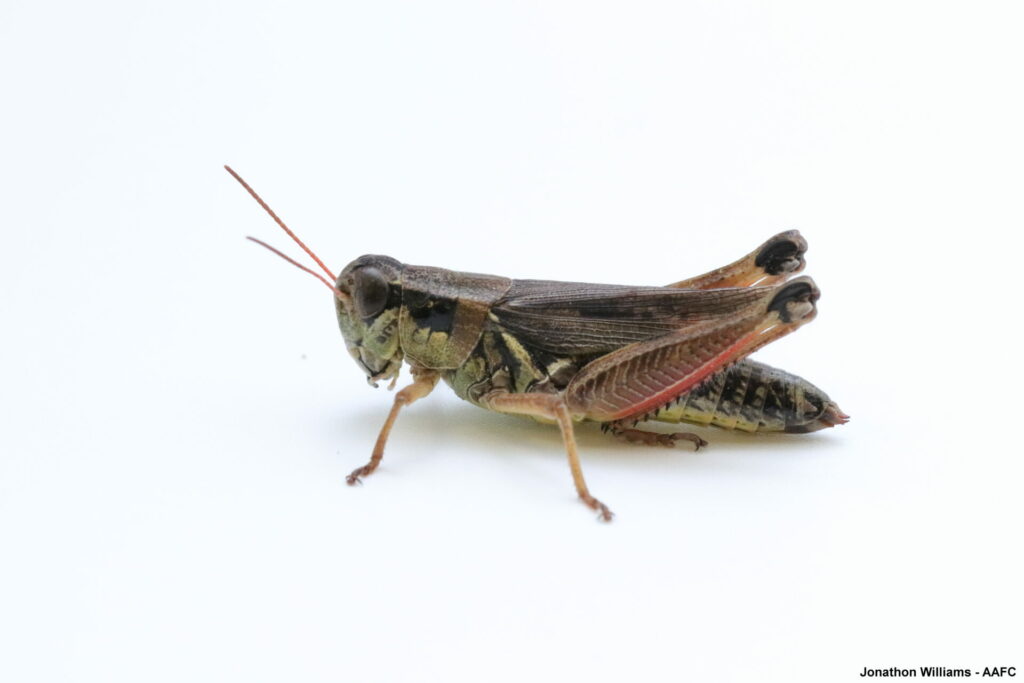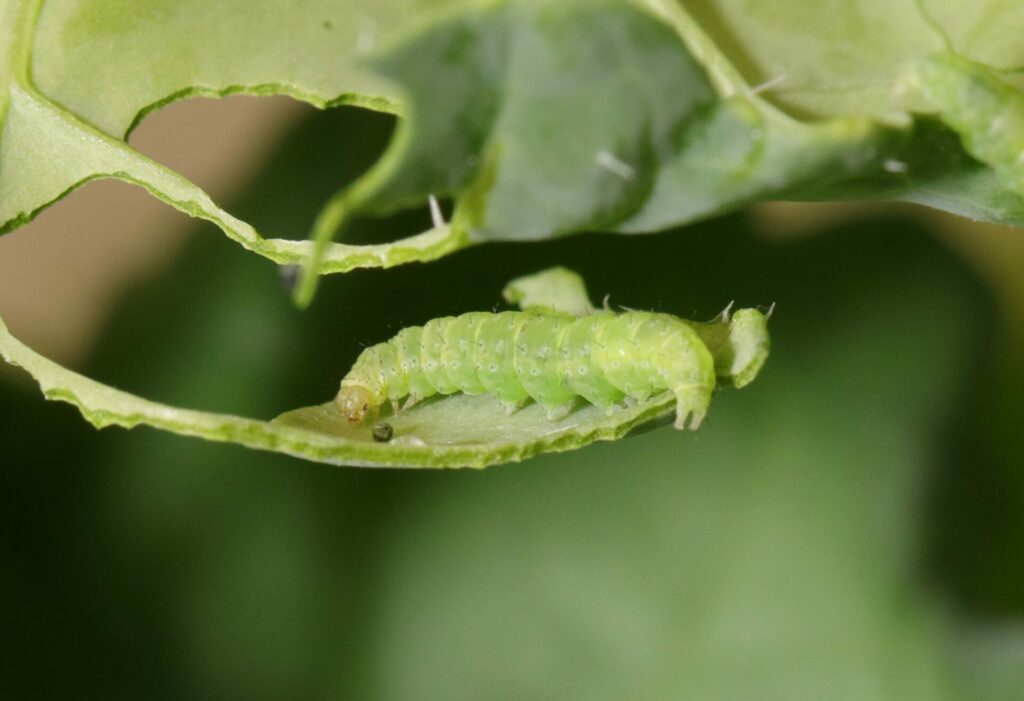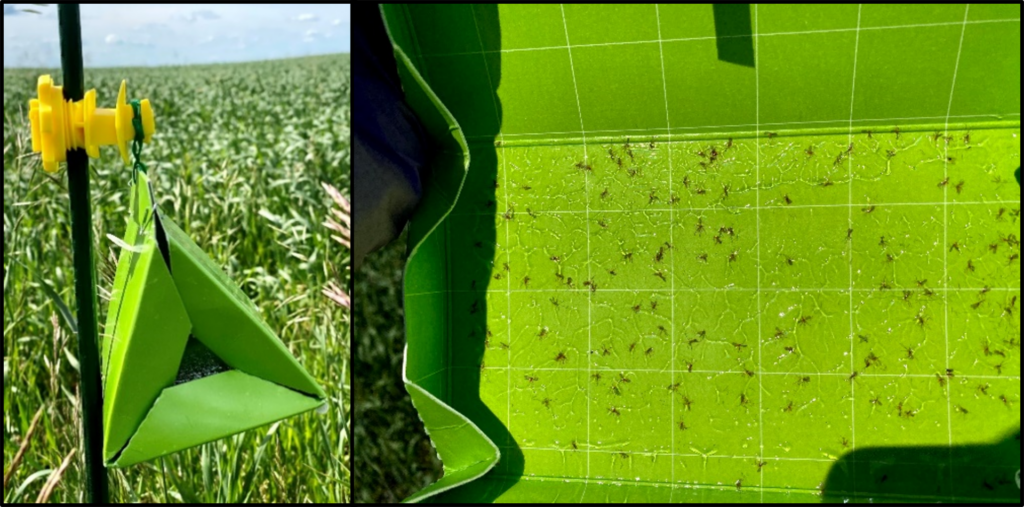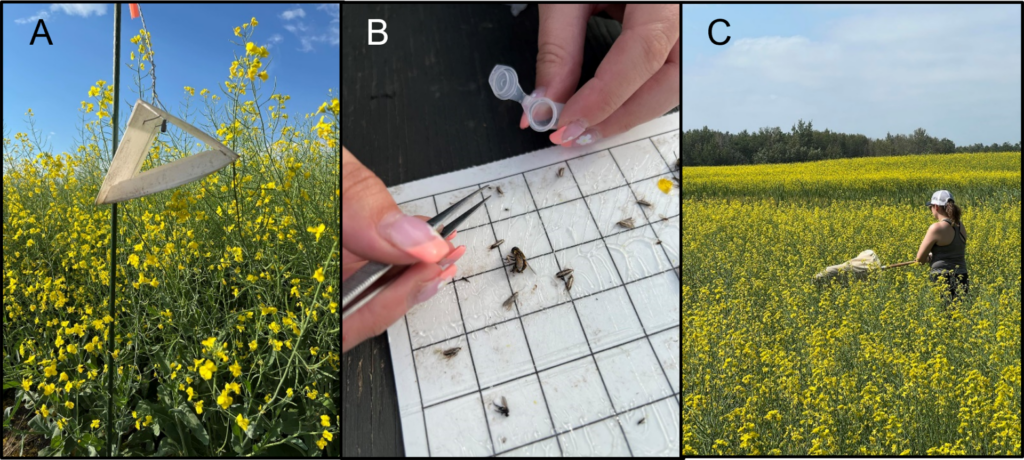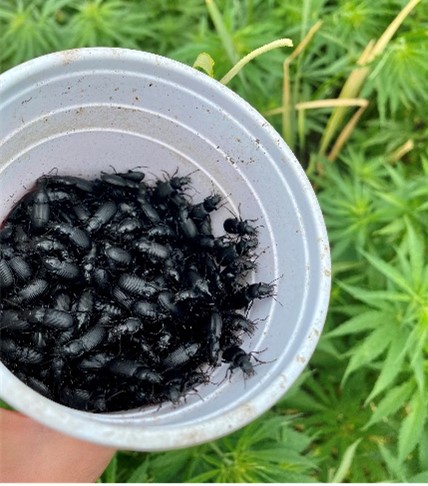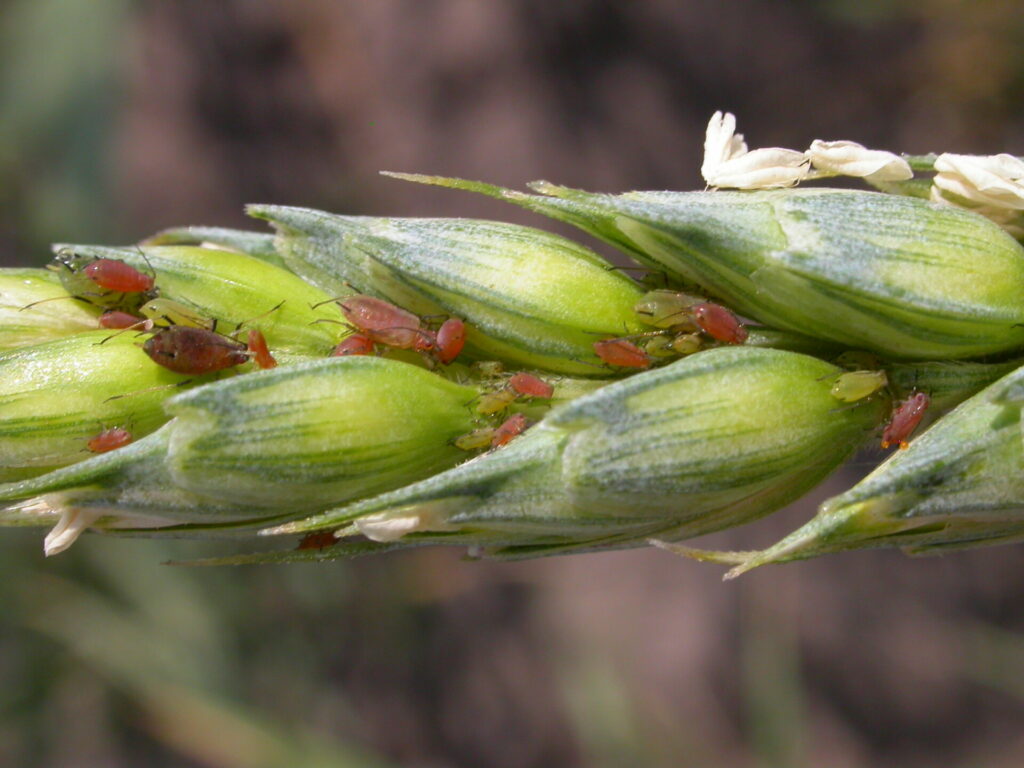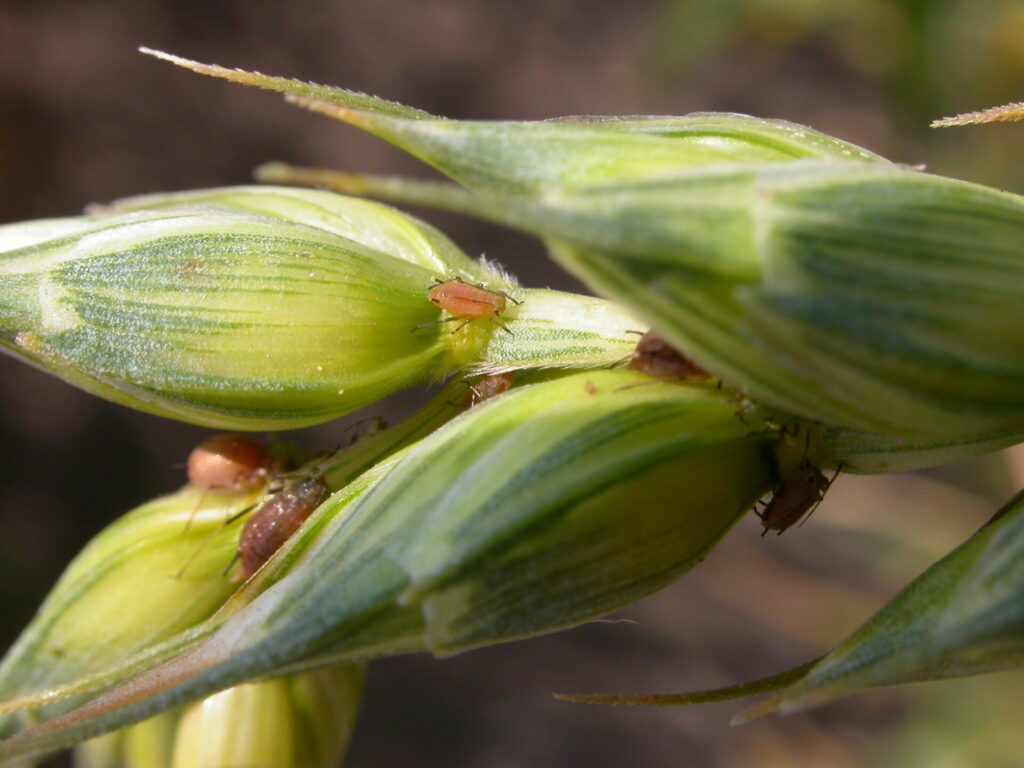Insect scouting season continues! Development of many pest insects (and of their host crops) is ahead of schedule this year, thanks to warmer than average weather during this growing season.
Between fieldwork and summer vacations, this Weekly Update is a short one. Thankfully, Shelley Barkley (Alberta Agriculture and Irrigation), James Tansey (Saskatchewan Ministry of Agriculture) and John Gavloski (Manitoba Agriculture) have kindly shared information about what they are seeing for insect pests in their respective prairie provinces.
Adult grasshoppers are now in flight and are expected to be busy reproducing across the prairie region. Scouting individual fields is important to best estimate crop risk. Information about grasshoppers and grasshopper monitoring is available from the Prairie Pest Monitoring Network, in the Field Crop and Forage Pests guide, Alberta Agriculture and Irrigation, Saskatchewan Ministry of Agriculture, and Manitoba Agriculture.
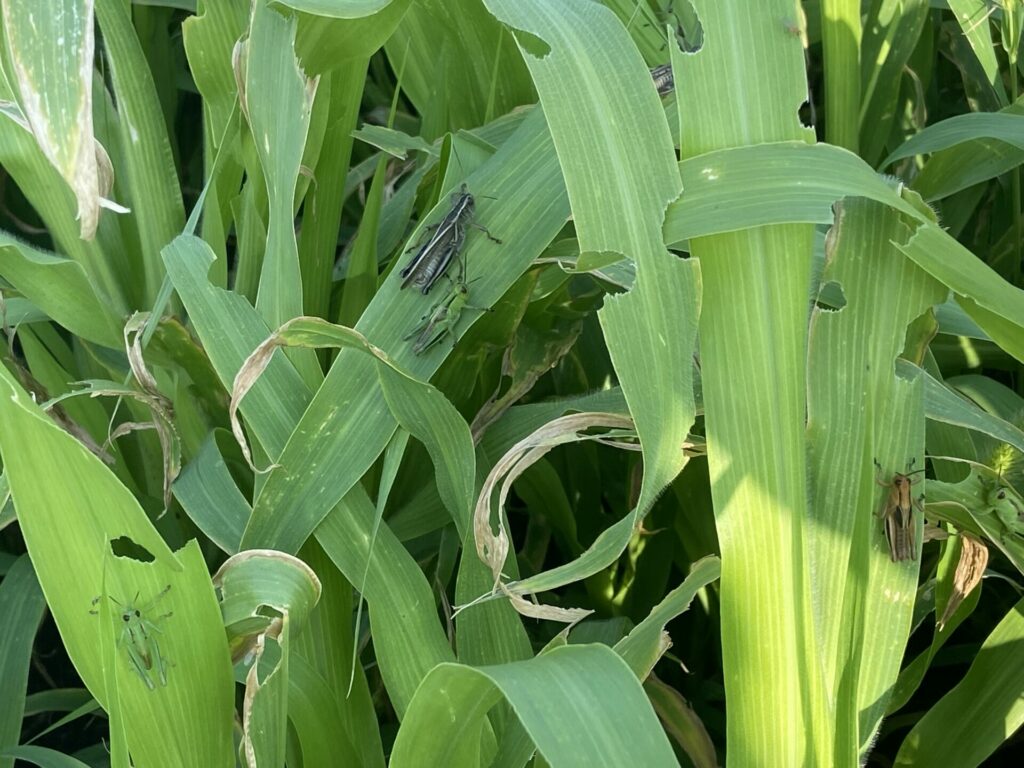
Diamondback moth, if present, should now be well into their fourth generation across the prairies. As warm temperatures prevail, remember that diamondback moth develop from eggs to adults quickly and the population increases with each generation. Scout canola fields for diamondback moth larvae. To scout for diamondback moth, estimate the number of diamondback moth larvae per m2 at several locations in a field. The economic threshold for diamondback moth is NOT based on pheromone traps or sweep net samples, but on the density of larvae per plant. For immature and flowering canola, the economic threshold is 100-150 larvae/m2. In podded canola, the economic threshold is 200-300 larvae/m2. See the Field Crop and Forage Pests guide and monitoring protocol for more information about scouting for diamondback moth.
Watch out for Invasive and Migrating Insects! If you suspect that you have found any of the insects on the Prairie Region Poster, please let us know using the form linked to the QR code on the poster. Note: many of us entomologists on the prairies are members of the Insect Surveillance Community of Practice!
On the topic of invasive insects, August is Tree Check Month! The Prairie Region Poster (and posters for BC, Ontario & Quebec, and Atlantic Canada) include invasive insect pests that could affect our forests in Canada.
Remember: 1) there are many resources available to help with planning for late-season insecticide applications to ensure Pre-Harvest Interval requirements are met, and 2) insect Monitoring Protocols containing information about in-field scouting as well as information about insect pest biology and identification are available from the Prairie Pest Monitoring Network.
To receive Weekly Updates automatically, please subscribe to the website!
Questions or problems accessing the contents of this Weekly Update? Please contact Dr. Meghan Vankosky (meghan.vankosky@agr.gc.ca) to get connected to our information. Past Weekly Updates, full of information and helpful links, can be accessed on our Weekly Update page.

